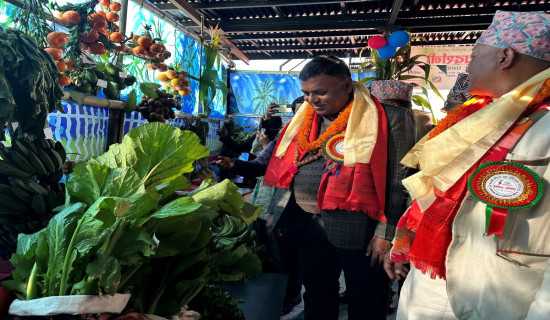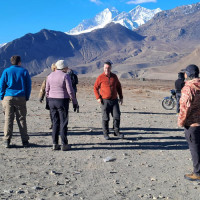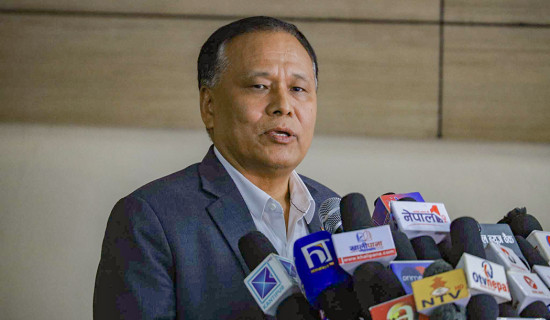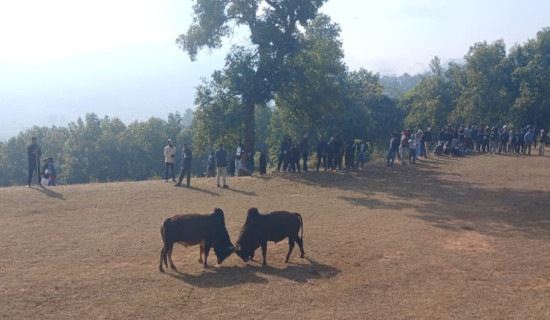- Friday, 2 January 2026
The Icefall Doctors
For them, Everest is their omphalos, armoured with their formidable weapons; ropes, ladder ice screw and their audacious attitude. The game changers in the iffy arena of mountaineering and probably the ones who never tarry commercial mountaineers. While the exact timeline depicting the notion of ‘Icefall doctors’ officially became the new normal is vague but after the onset of 1907, when the first Sherpas were recruited by the European explorers and reconnaissance team to scale the crown of the world.
After the historic Everest summit by Tenzing Norgay and Edmund Hillary, there was no looking back for 'Sherpas. Ice Fall Doctors aren't mere clichés conjured up to sound pretentious. On the contrary, they are a bunch of dare-devils who live on the edge for a living, they have garnered seasoned insights to determine the age of the ice, its maturity factor and those who can gauge the temperament of the whole nine yards regarding rout fixing and other paradigms.
Treacherous Crevasse
The Sagarmatha Pollution Control Committee (SPCC) in collaboration with the Department of Tourism is entrusted with the task of fixing the route below Camp 2. Myriads of trekking agencies which are booked with expeditions fix the route above Camp 2. The structure of the ice is always changing until the periphery of camp 2 it’s filled with lots of glaciers and snow pits. Any Tom, Dick and Harry can't fathom the treacherous deep ice crevasse, undulating ice moraines and frozen cliffs.
Icefall doctors are more like an obscure voice working silently and meticulously navigating the treacherous paths, with the onset of every climbing season (Spring-Autumn), the (SPCC) assigns the band of unsung heroes and it’s a norm for the icefall doctors to head towards the Everest to fix route during March. As Everest gets open for commercial climbing from April during the spring climbing season. The ice-fall-doctors harbour a more traditional outlook before proceeding on their task, before commencing on to their tedious and challenging task, they seek the guidance and benevolence of the female deity Jomo Miyo Lang Sangma which is believed to reside at the Jomolangnma or the sui generis Mount Everest.
The mountaineering communities of Sherpa consider Mount Everest and other mountains to be an active reflection of the all-pervading omnipresent, the designer of this cosmic drama. The Sherpa community has their utmost faith in the divine powers of the goddess. It is the customary norm which is followed without an ounce of dearth before sauntering towards the front yard of Mount Everest to seek immense strength and apologise for shortcomings. They are often perched on the nooks and crannies at higher elevations living in tents to accomplish what they do best. They are deployed for roughly 75 days (three months) treading gingerly and keeping a watchful eye for any kinds of anomalies surging beneath the veneer sheets of ice. They are available 24 hours during the tenure of three months focusing on mountaineering routes at Mount Everest, Lhotse and Nuptse since they are climbed through the Everest Base Camp. They generally snoop out the perfect location from where they can operate without any obstructions and avoid being crushed or swept away by avalanches. Rout fixing is a meticulous and arduous task which is often performed with oodles of pieces of advice and seasoned expertise. Their main task is to fix the route and repair it during the tenure of three months. And as they head up to Camp 2, they have to find the way and repair it during every climbing season.
And once the climbing season comes to an end, they remove their ropes, ice screws, and ladders and head back home. Climbing up the elevation of the mountain is not a piece of cake as anything can go wrong in the flicker of seconds about the unpredictable and fatal aspects of mountaineering. Since ropes are the most important material required to make a route. According to the (SPCC), ropes of high quality are brought from abroad, and around five thousand and five hundred meters of ropes have to be used to build the route from the base camp to camp 2. Ladders are the second most valuable assets to be used in multiple manners. Ladders are used vertically and horizontally to navigate through the ice but the requirement of the number of ladders varies according to the condition of the route. Ice screws and nails are de rigueur items for ice fall doctors.
Savoire-Faire
An ice screw is a small type of shovel used for burying snow. The average pay of the ice fall doctor is around $3000 + $600 per person included in the expedition. They have to face the treacherous path every season as the ice constantly moves due to which there is a high possibility of the ice tower crumbling into smithereens, sweeping away human lives. They are a bunch of temerarious traversing the dangerous routes through the Khumbu icefall annually. The route perched between base camp and camp 3 is considered to be highly dangerous. Training for ice fall doctors is conducted at Khumbu climbing centre (KCC). In Phorte for several years.
A new route had been ordained through Khumbu Icefall after an avalanche erupted at the western can Khumbu on 16th April 2014 swiping away thirteen Sherpas during an expedition as they had persisted through the deadly icefall. The old route was navigated along the Lola past the left side of the icefall. The new route through fare was mapped out from base camp to camp I through the centre of the icefall followed by the pre-existing route to camp II. This central route reduces the risk of encountering collapsing serac and avalanches.
Ice-fall-doctors are the unsung heroes of every exhibition venturing above the crowning glory the Everest braced with their materials and the heart of a lion who audaciously face the music and play a game of roulette with their lives. They are attuned to the vibration of the mountain, even the slightest anomalies are discerned by their seasoned savoire-faire. They are a breed of mavericks, who risk it all peregrinating through nooks and crannies around Everest.
(Saudamini holds a PhD in travel and tourism of Nepal)
















